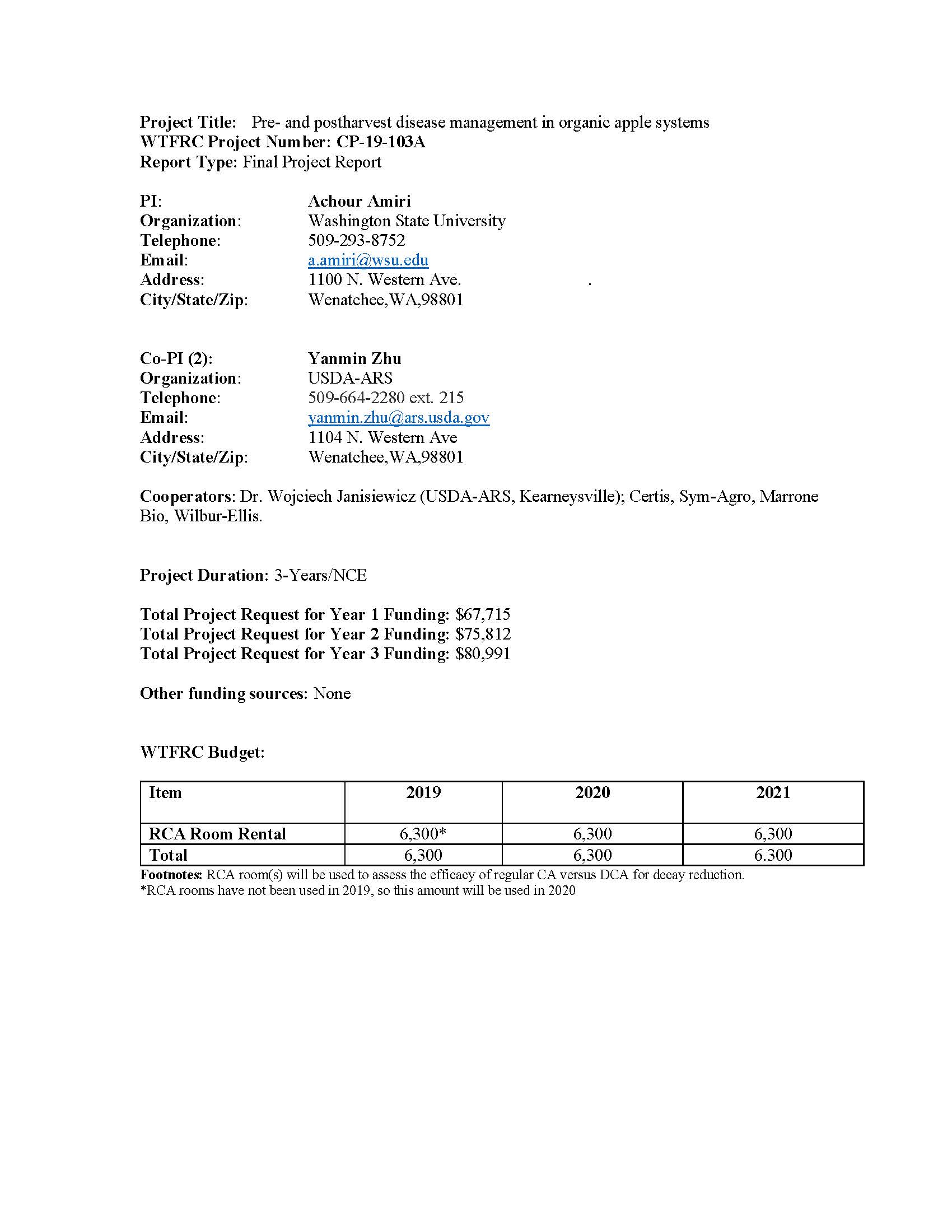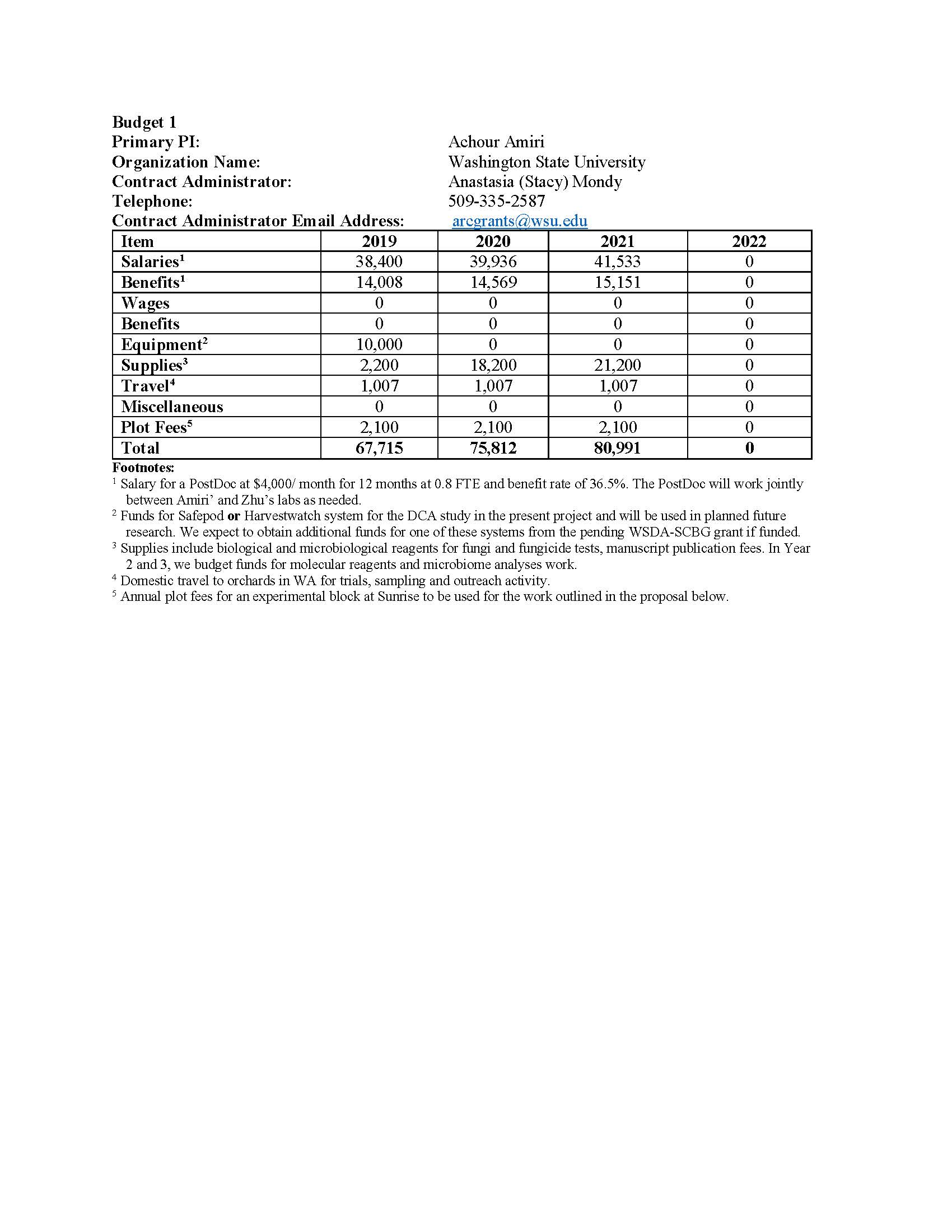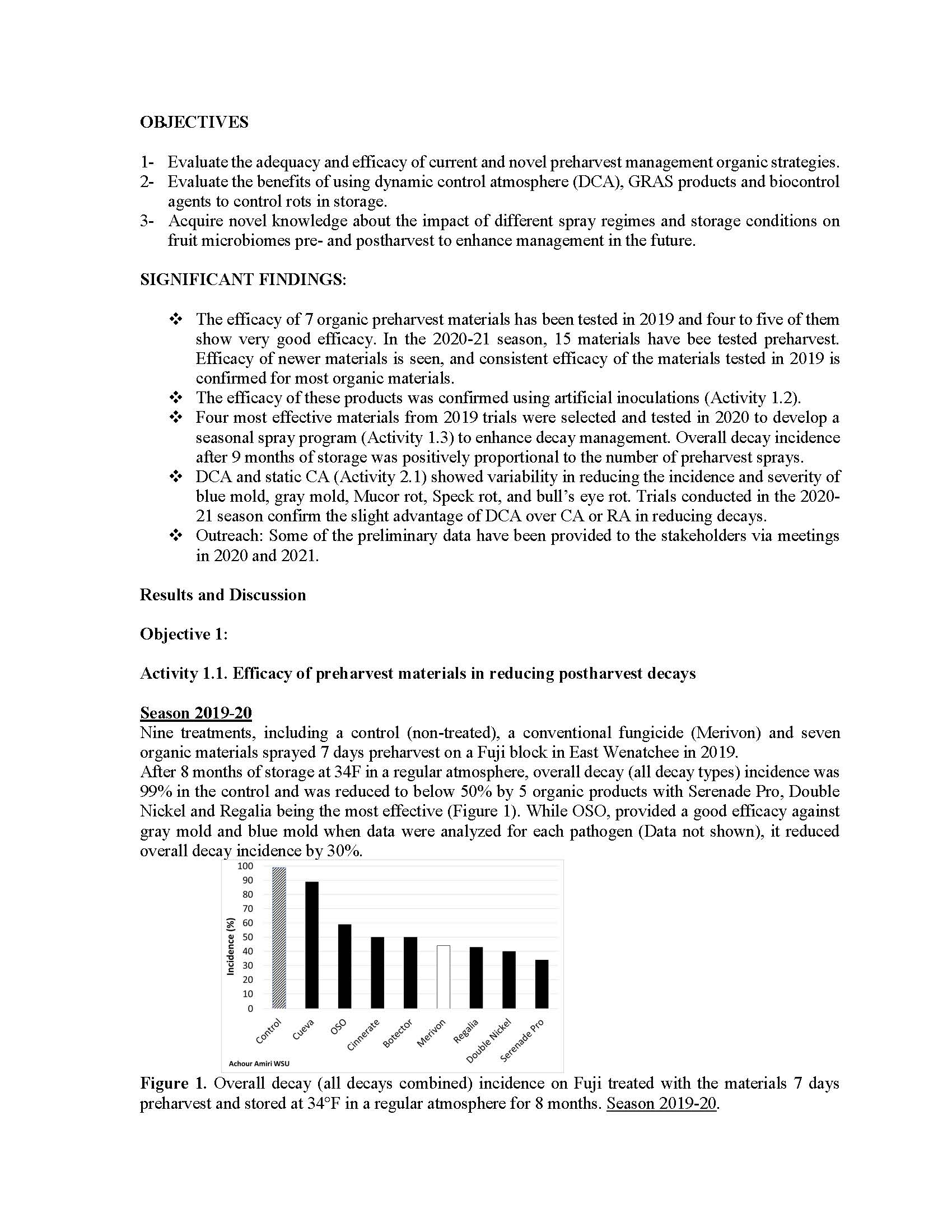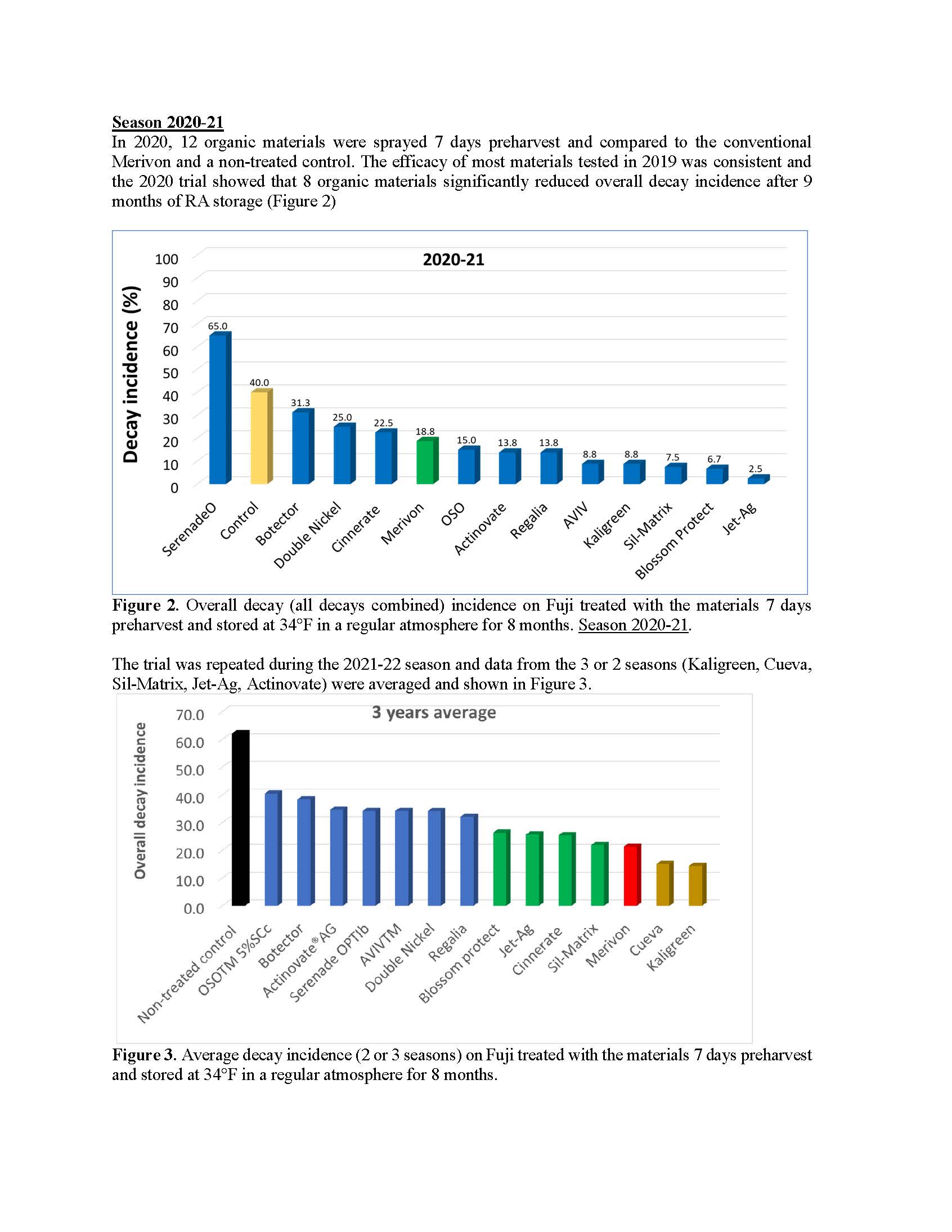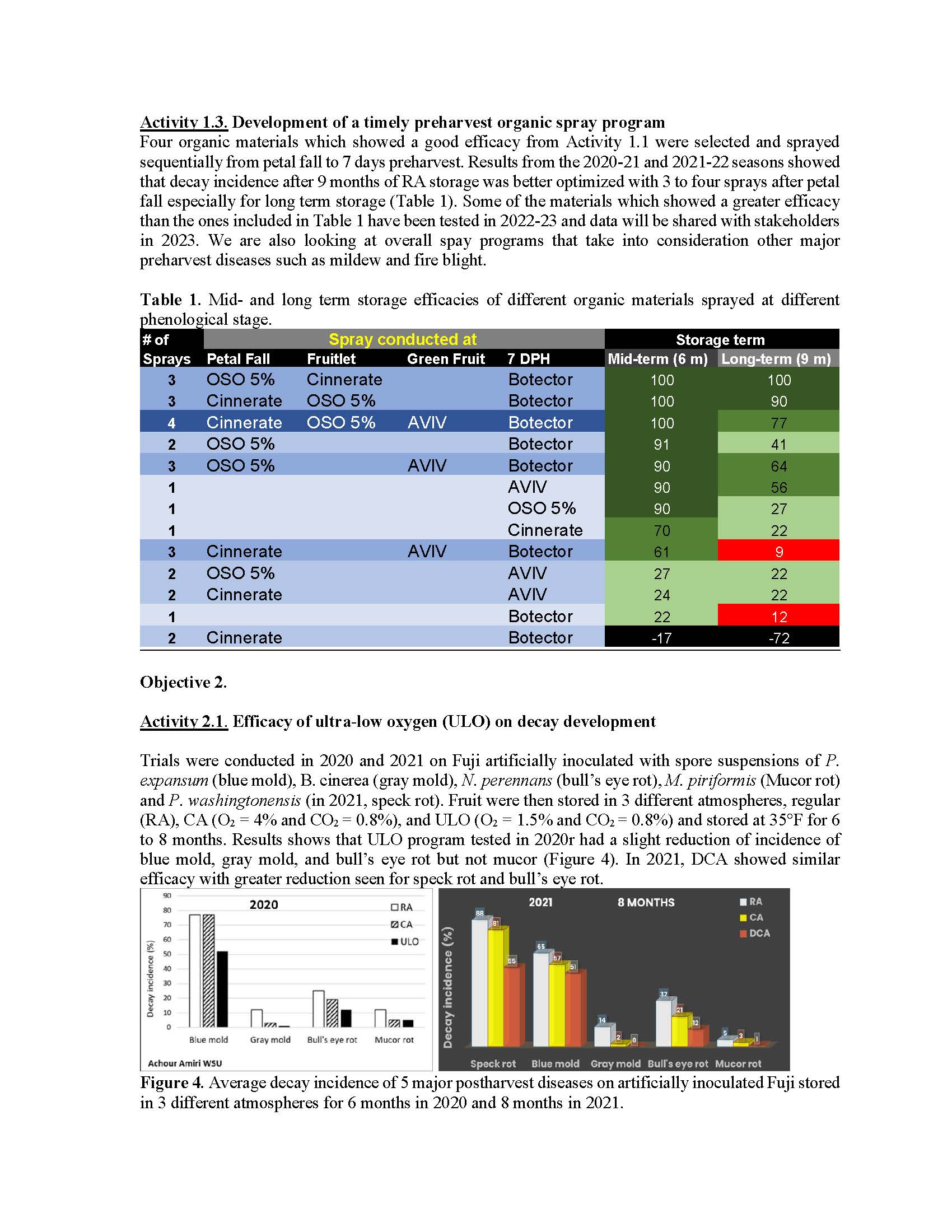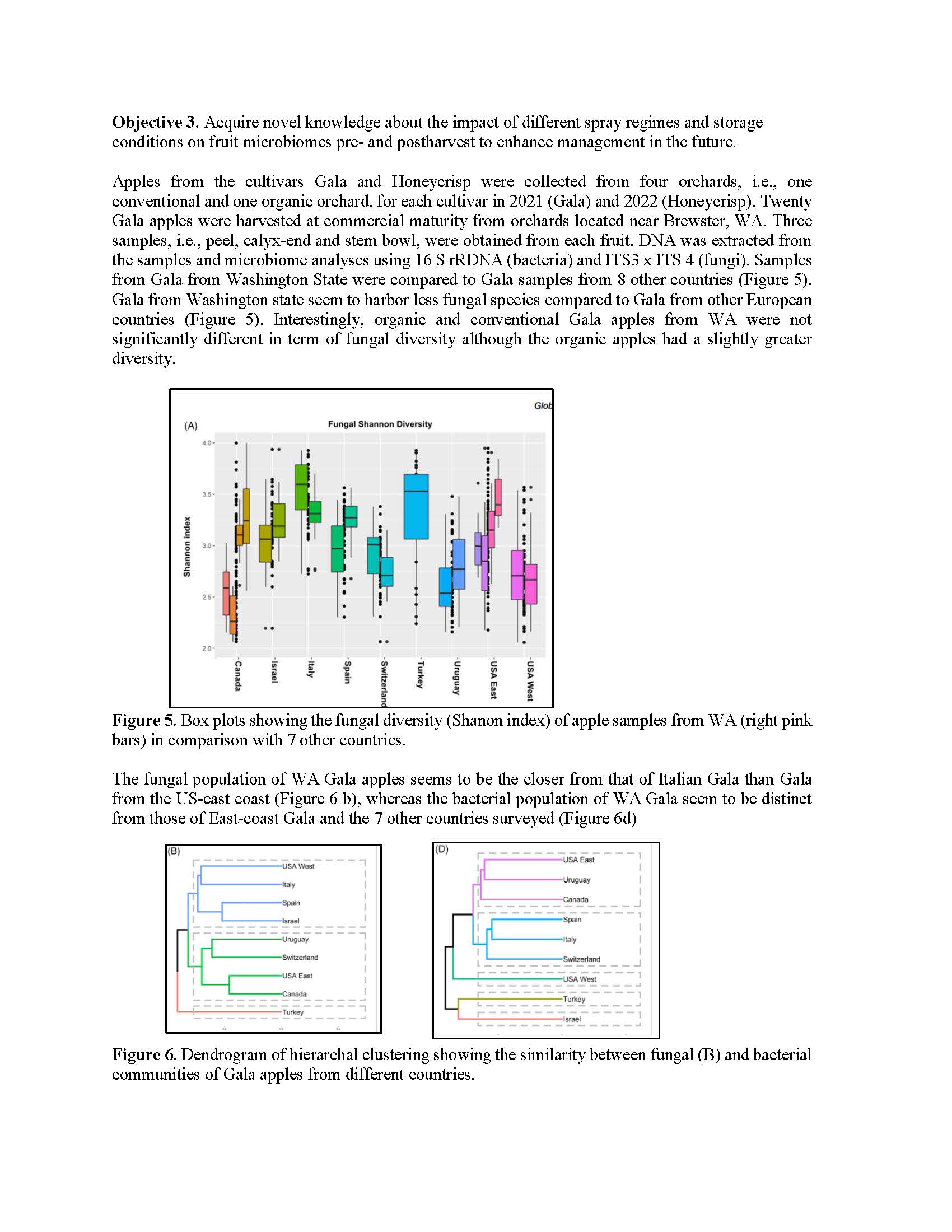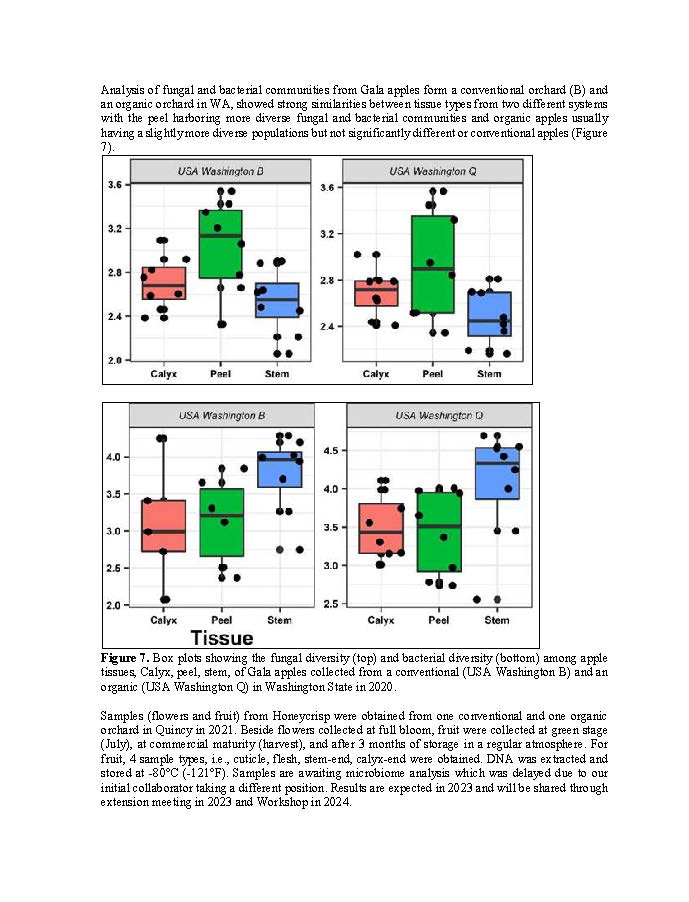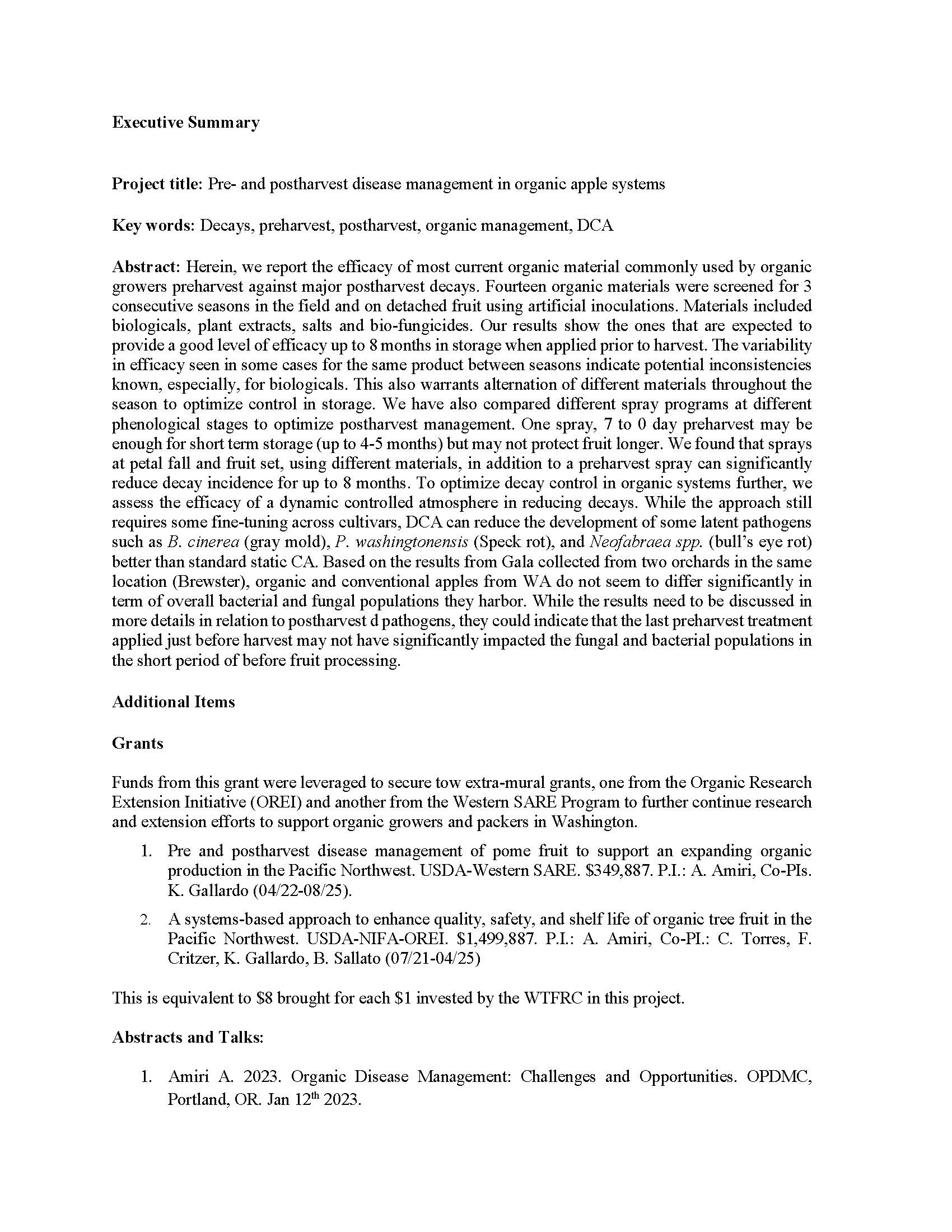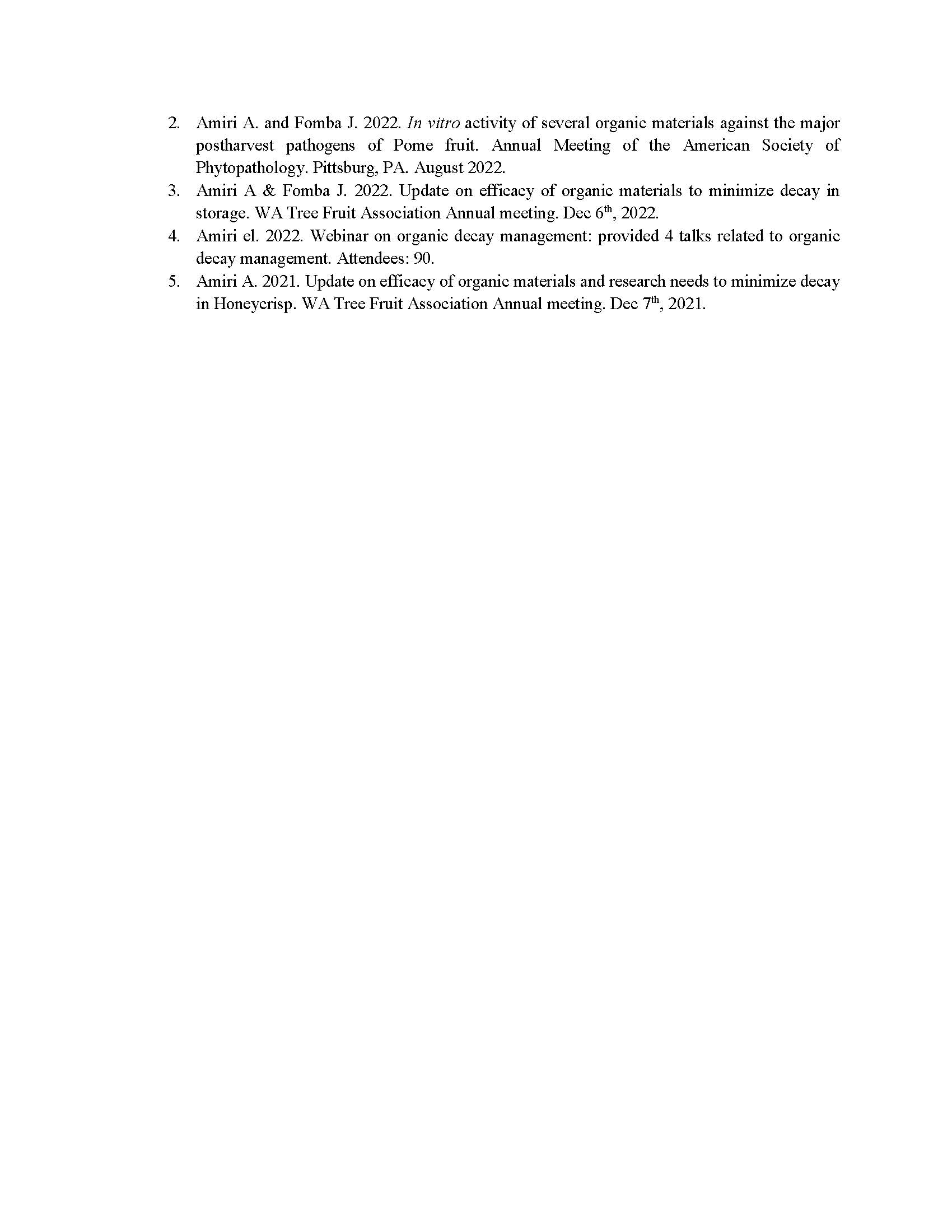Pre- and postharvest disease management in organic apple systems
Author: Achour Amiri
Published: 2023
Summary: Herein, we report the efficacy of most current organic material commonly used by organic growers preharvest against major postharvest decays. Fourteen organic materials were screened for 3 consecutive seasons in the field and on detached fruit using artificial inoculations. Materials included biologicals, plant extracts, salts and bio-fungicides. Our results show the ones that are expected to provide a good level of efficacy up to 8 months in storage when applied prior to harvest. The variability in efficacy seen in some cases for the same product between seasons indicate potential inconsistencies known, especially, for biologicals. This also warrants alternation of different materials throughout the season to optimize control in storage. We have also compared different spray programs at different phenological stages to optimize postharvest management. One spray, 7 to 0 day preharvest may be enough for short term storage (up to 4-5 months) but may not protect fruit longer. We found that sprays at petal fall and fruit set, using different materials, in addition to a preharvest spray can significantly reduce decay incidence for up to 8 months. To optimize decay control in organic systems further, we assess the efficacy of a dynamic controlled atmosphere in reducing decays. While the approach still requires some fine-tuning across cultivars, DCA can reduce the development of some latent pathogens such as B. cinerea (gray mold), P. washingtonensis (Speck rot), and Neofabraea spp. (bull’s eye rot) better than standard static CA. Based on the results from Gala collected from two orchards in the same location (Brewster), organic and conventional apples from WA do not seem to differ significantly in term of overall bacterial and fungal populations they harbor. While the results need to be discussed in more details in relation to postharvest d pathogens, they could indicate that the last preharvest treatment applied just before harvest may not have significantly impacted the fungal and bacterial populations in the short period of before fruit processing.
Keywords:

